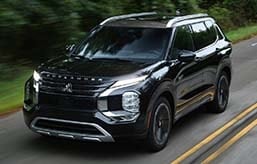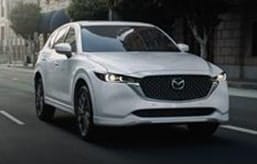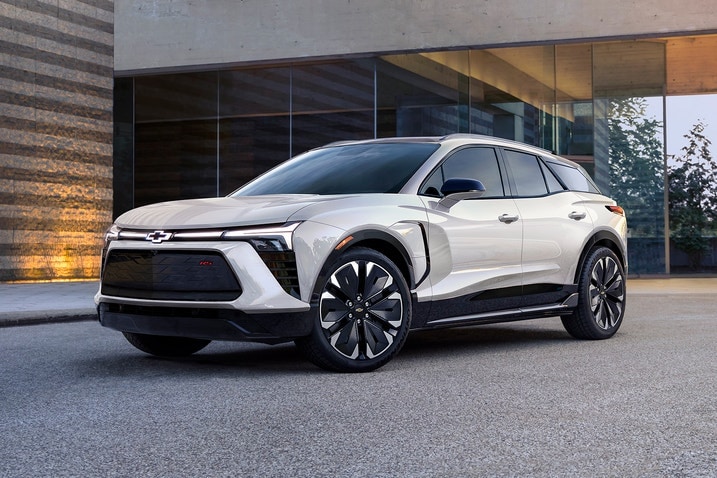- General Motors announced that its new EVs will not have Apple CarPlay and Android Auto.
- This is likely a result of Apple's growing ambitions in the automotive space.
- Customers will soon have to choose between a much-loved feature and the new EV they want.
Your Next General Motors EV Might Not Have Apple CarPlay or Android Auto
Customers caught in a multibillion-dollar power struggle
According to a new Reuters report, the next generation of General Motors electric vehicles won't offer Apple CarPlay or Android Auto smartphone integration. The 2024 Chevrolet Blazer EV, due out this summer, will be the first to be absent with these features, which beam popular applications from your smartphone to the vehicle's infotainment screen. These systems make it possible to interact with your phone on a larger screen for improved usability, and legally, since many jurisdictions do not allow you to hold your phone while driving.
A CNBC article written last year quotes Apple engineering manager Emily Schubert, who shared this statistic: "79% of U.S. buyers would only buy a car if it supported CarPlay." So why get rid of these systems, which are loved by customers and the press alike?
Am I Ready for an EV?
- EV ownership works best if you can charge at home (240V outlet)
- Adding a home charging system is estimated to cost $1,616 in
- Edmunds is partnering with Treehouse, an independent provider of home EV installation services. Learn more about the installation services partnership
Theoretical benefit to not using CarPlay
Reuters interviewed Mike Hichme, executive director of digital cockpit experience at General Motors, about the changes. "We have a lot of new driver assistance features coming that are more tightly coupled with navigation. We don’t want to design these features in a way that are dependent on person having a cellphone."
Reuters notes that "GM has been working with Google since 2019 to develop the software foundations for infotainment systems that will be more tightly integrated with other vehicle systems such as GM's Super Cruise driver assistant."
It's certainly possible that using a vehicle's native navigation system could benefit systems such as GM's hands-free Super Cruise or upcoming Ultra Cruise suites. Knowing exactly what your destination is, for instance, could help guide the automatic lane changing function so the vehicle can guide itself on the correct freeway off-ramp. This isn't possible if you use a phone's maps application, as the software doesn't really talk to the car's hardware.
However, this is a relatively isolated benefit for consumers. It isn't applicable to anyone not using Super Cruise or Ultra Cruise, for instance, and drivers could easily just use the native navigation system instead of the phone's maps if they want to get the full hands-free driving experience. The larger picture is that not employing Apple CarPlay and Android Auto gives GM greater access to in-vehicle data and greater control over an in-vehicle marketplace. In terms of consumer benefit, there is none.
GM wants more control over data, subscriptions
The control over user data is one of the reasons some automakers were hesitant to adopt Apple CarPlay and Android Auto in the first place. Toyota, for instance, launched its own smartphone integration application (Toyota Entune and Lexus Enform) to dismal results before the automaker eventually capitulated, and neither Tesla nor Rivian currently offers CarPlay or Android Auto at all. Because Apple doesn't necessarily share the data it collects from CarPlay use with the manufacturer, the automaker doesn't have as much user information as it would if the driver was using the native system.
By jettisoning CarPlay from the vehicles and locking Apple out of the ecosystem entirely, General Motors will sweep up that sweet, sweet user data for itself. Even though GM is tapping Google to build the backbone of the infotainment system, the exclusion of Android Auto integration suggests GM is forcing the search giant out as well to some extent. Reuters notes, however, that all future GM EVs will have Google Maps and Google Assistant integration incorporated "at no extra cost for eight years."
And that brings us to the final point: after-purchase sales. It's no secret that automakers are looking past the traditional profit centers of sales, financing and parts to keep the money train rolling. We've already seen subscription fees for Apple CarPlay (BMW), features that already come on the car (again, BMW as well as Toyota, Tesla and others), smartphone app functionality (BMW but also Hyundai, Nissan, GM and many others) and in-car entertainment (Tesla). In many ways, GM was the pioneer in this space when it launched the OnStar pay service in the mid-'90s; a more intense focus on GM's subscription stream just brings everything full circle.
While this announcement doesn't directly address what services GM will charge subscription fees for, we do know how they'll get there. For now, GM is charging subscription fees for Super Cruise functionality, OnStar (though in a roundabout way for new cars via a three-year subscription of the service, which is locked into a controversial, $1,500 nonremovable option) and the smartphone app. But GM has already committed to increasing revenue generated by subscription services from $2 billion annually to between $20 billion and $25 billion by 2030, and Apple threatened that growth. How? Well ...
Apple may have overstepped
Last year, Apple unveiled a new version of CarPlay that not only beamed its interface to the central touchscreen but to other screens as well, including a vehicle's digital instrument cluster. By taking over more vehicle functions, CarPlay would be inserting more of itself into the car's systems, and that may have locked out even more vehicle data to the automaker. In the CNBC article, Goldman Sachs analyst Rod Hall was even quoted as saying, "We believe this could eventually lead to Apple providing services leveraging car sensor platforms."
With this increased integration, even takeover, of a vehicle's hardware, Apple might begin to introduce in-car subscription services of its own, and those could compete directly with what the manufacturer might offer. Even if Apple only took a small cut of these services, that's money not being directed at the automaker.
Last year, CNBC prophesized that "the auto industry faces an unappealing choice: Offer CarPlay and give up potential revenue and the chance to ride a major industry shift, or spend heavily to develop their own infotainment software and cater to a potentially shrinking audience of car buyers who will purchase a new vehicle without CarPlay." It's highly likely then that GM, fed up with Apple's increasing presence in its vehicles and with the threat of subscription competition on the horizon, simply chose the go-it-alone approach. Or, more accurately, the go-with-Google approach. One imagines GM's requirements for the team-up centered on Google not having the forced integration tools that Apple is attempting to employ.
Edmunds says
General Motors is taking a major risk by dropping Apple CarPlay and Android Auto from its vehicles, though Google's development of GM's software means that Apple is definitely getting the shorter end of the stick. That's not much of a surprise, as CarPlay's deeper integration into vehicles was the first shot in this battle. In the end, though, it's customers who suffer, as the features they love will soon be gone as a result of a multibillion-dollar power struggle.




 by
by